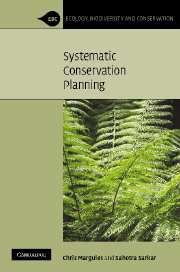Systematic Conservation Planning
Systematic Conservation Planning provides a clear, comprehensive guide to the process of deriving a conservation area network for regions, which will best represent the biodiversity of regions in the most cost-effective way. The measurement of biodiversity, design of field sampling strategies, alongside different data treatment methods are detailed helping to provide a conceptual framework for identifying conservation area networks, underpinned by the concept of complementarity. Setting conservation targets and then multi-criteria analyses, using complementarity but bringing in other criteria reflecting competing uses of land or water, to show how conservation area networks can achieve conservation targets in ways that also allow for the production of food, fiber and shelter are also discussed. Providing a clear procedure for identifying conservation priority areas underpinned by cutting edge science, this book will be of interest to graduate students, academics, planners and decision makers dealing with natural resource use and exploitation, alongside conservation NGOs.
- Extensive use of examples from the field and the academic literature, allowing readers to relate more easily to their own situations
- Includes end of chapter summaries, enabling reiteration of the main points made in the chapter
- Deliberately avoids jargon, except where absolutely necessary, making the ideas easily assimilated and readable
Reviews & endorsements
'Biologists often have to work outside their area of expertise when considering economic, social and political factors in practical conservation. They will surely benefit from this useful book.' Biologist
Product details
September 2007Hardback
9780521878753
278 pages
235 × 159 × 19 mm
0.596kg
66 b/w illus. 10 colour illus. 14 tables
Temporarily unavailable - available from March 2023
Table of Contents
- Acknowledgements
- 1. Introduction
- 2. Biodiversity surrogates
- 3. Data collection
- 4. Data treatments
- 5. Conservation area networks
- 6. Persistence and vulnerability
- 7. Satisfying multiple criteria
- 8. Systematic conservation plans
- 9. Conclusions
- References.










